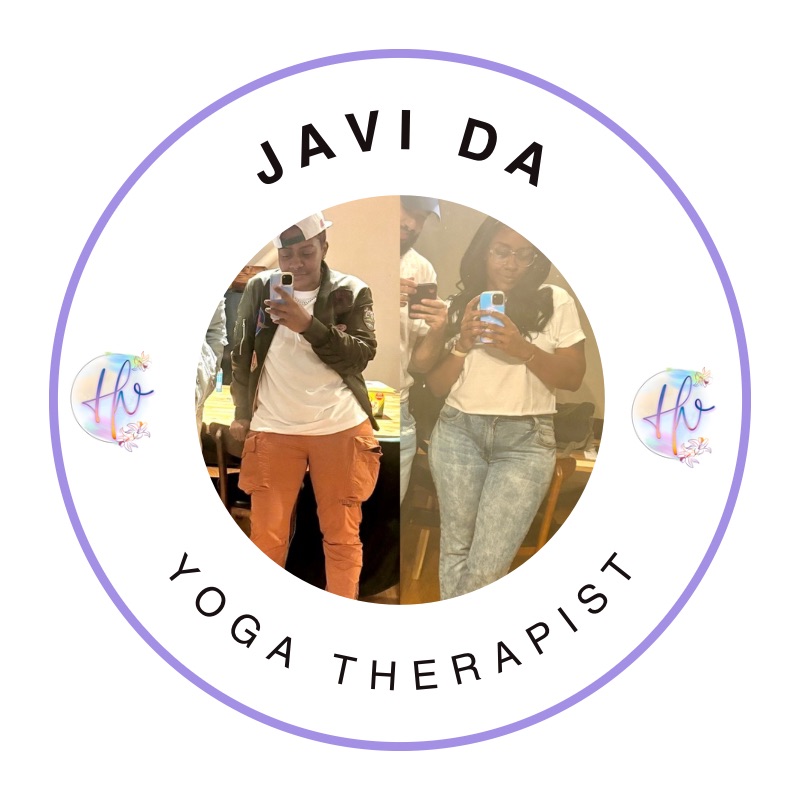Solo Polyamory & Self-Relationship: What Yoga Teaches Us About Radical Autonomy & Love
- Javi Da Yoga Therapist

- Oct 15
- 3 min read
Most people hear the term solo polyamory and immediately think: commitment-phobe, avoidance tactic, or an easy way to dodge the hard work of attachment.
Let’s shut that down right now.
I’m Javi da Yoga Therapist, and I’m here to tell you that true solo polyamory is not about avoiding attachment—it is a practice of radical self-trust and inner steadiness. The most critical relationship you will ever navigate is the one with yourself, and this model forces you to center it.
Yoga philosophy aligns with this perfectly. The goal isn't to rely on external validation; it’s to cultivate unshakeable inner stability. If you want to build relationships that are truly autonomous and whole, you have to do the work to become whole, first.
The Three Pillars of Solo Polyamory: Lessons from Yoga
A sustainable, joyous solo-poly life requires a deep commitment to three key yogic practices:
1. Non-Attachment (Vairagya) = Detachment
This is the most misunderstood concept in both polyamory and yoga. Non-attachment doesn't mean you don't care about your partners or their connections. That’s detachment—and that’s avoiding intimacy.
Vairagya is the practice of letting love exist without gripping onto control. You can profoundly love people, enjoy deep intimacy, and still respect their complete autonomy and yours. It means your happiness isn't tethered to their presence or their choices. This is the daily, moment-to-moment release of emotional clinging.
2. Self-Study (Svadhyaya) = Emotional Clarity
When you commit to Svadhyaya, you become your own primary relationship anchor. The solo polyamory model constantly tests your self-awareness because you aren't using a nesting partner as a baseline or emotional buffer. You must know your own territory:
Trigger Mapping: Where do my insecurities truly originate? Are they old family wounds or current relational issues?
Wants vs. Needs: What do I actually need to feel safe and fulfilled in a relationship, and what are just conditioned cultural wants?
Alignment Check: Am I choosing this relationship (or this boundary) from a place of genuine alignment or from a place of fear and scarcity?
This commitment to self-study is what prevents the "me vs. them" mindset, replacing it with an "I am complete" mindset.
3. Your Nervous System is Your Relationship Anchor
If your relationships often feel chaotic, high-stakes, or triggering, it might not be the people or the structure of polyamory—it might be nervous system dysregulation.
Solo polyamory is an advanced practice because it requires you to be autonomically regulated. If you're constantly seeking partners to soothe your anxiety or fill an emotional void, you’re not practicing autonomy; you’re practicing emotional dependence with multiple people.
Yoga helps us feel safe in our own bodies. This internal sense of safety is the only true anchor. When you are regulated, you choose partners from a place of overflow, not lack. You are choosing love, not rescue.
Guided Practice: Cultivating Embodied Self-Trust
True autonomy is felt, not just thought. This simple guided exercise is a powerful way to ground your nervous system and cultivate self-trust.
Find your base: Settle into a comfortable, supported seated position. Gently close your eyes or soften your gaze.
Anchor your touch: Place one hand over your heart center and one hand over your lower belly (Harakiri/Dantian). This is a gesture of self-compassion and grounding.
Breathe and Affirm: Take five deep, slow breaths. On the exhale, release any tension you are gripping. As you breathe, repeat these affirmations silently:
“I am whole within myself.”
“Love flows freely without fear.”
“I trust myself to navigate love with ease and grace.”
Observe: Notice any resistance, emotional flicker, or insight that arises. Don't judge it; just witness it (Drashta).
Integrate: Spend a few minutes journaling about any clarity you received.
This is a practice, not a perfect. Allow yourself grace and space as you navigate the edges of love and independence.
Reflection Questions:
What specific fears surface when you contemplate being truly autonomous in your relationships?
How can you apply Vairagya today to a relationship where you feel yourself clinging?
Where do you need to invest more in Svadhyaya to choose from alignment, not fear?





Comments